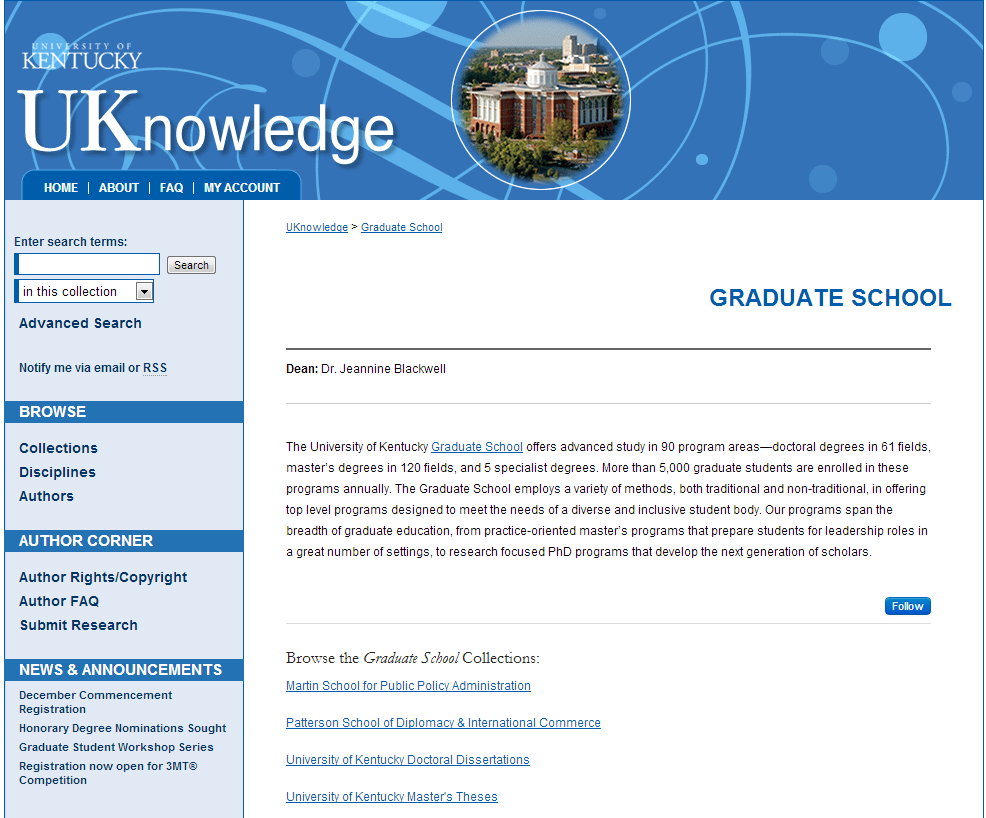The IR is an ideal showcase for graduate students’ crowning achievements; not only are theses and dissertations more discoverable when published digitally, but featuring student output in the IR connects innovative research with the institution that helped foster it. A growing number of Digital Commons subscribers are using the platform to manage Electronic Theses and Dissertations: from comprehensive peer-review tools to customizable submission forms, it’s a great way to streamline and track an ETD’s “life-cycle” from start to finish.
At University of Kentucky, students submit semi-final drafts to the repository—from there, the Graduate School uses bepress’s tools to notify advisers and track all revisions, comments, and later drafts. Students at University of South Florida see benefits from their ETDs’ online visibility with automated web-traffic reports. Rebel Cummings-Sauls, Coordinator of Library Operations at USF, looks forward to further integrating the workflow into the IR—requiring students to submit to the repository will provide “a greater sense of ownership and control” than the current process does. And farther north in the sunshine state, students submit their final-draft ETDs directly into the University of North Florida’s repository. The Graduate School approves ETDs that are ready to post, uses a tailor-made checklist to spot formatting errors, and sends messages to students alerting them of necessary revisions.
For more ideas about how different schools are using DC to manage their ETD workflows, check out our own Dave Seitz’s upcoming webinar, “Emerging Trends in ETD Publishing Models: A Bird’s Eye View,” on October 24th. To get a sense of benefits to administrators, faculty, and students, don’t miss our community webinar on November 7th, “Increasing the Visibility of Graduate Research with Electronic Theses and Dissertations,” featuring library faculty from Western University and Eastern Illinois University.

Graduate School – University of Kentucky Research – UKnowledge






